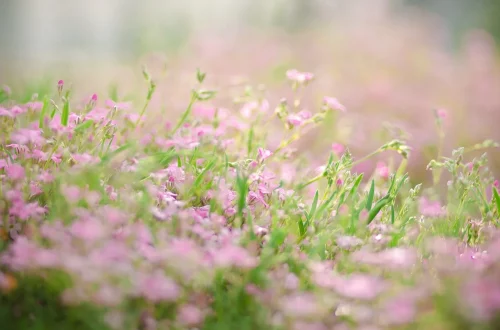
The Fascinating World of Orange Koi Fish and Their Care Tips
The vibrant colors and graceful movements of koi fish have captivated aquarists and nature lovers for centuries. Among the many varieties of koi, the orange koi fish stands out due to its striking hue and charming personality. These fish not only add beauty to ponds and aquariums but also symbolize prosperity and good fortune in various cultures. With their origins deeply rooted in ancient Japan, koi have transformed from humble agricultural fish into prized possessions that grace the gardens of many homes around the world.
The allure of orange koi fish lies not only in their aesthetic appeal but also in their fascinating behaviors and social interactions. Known for their intelligence and adaptability, these fish can form bonds with their caretakers and even recognize them over time. This unique connection makes koi keeping a rewarding hobby that goes beyond mere aesthetics. As we delve deeper into the world of orange koi fish, we will explore their characteristics, care requirements, and the essential tips for creating an ideal environment that promotes their well-being.
Understanding the Characteristics of Orange Koi Fish
Orange koi fish are a vibrant variety of the Nishikigoi, a term used in Japan for colored carp. Their bright orange coloration can range from a soft pastel hue to a deep, rich tone, making them a popular choice for ornamental ponds and water gardens. These fish are not only visually striking, but they also possess distinct personalities that set them apart from other aquatic species.
One of the most notable characteristics of orange koi is their size. With proper care, these fish can grow to impressive lengths, often exceeding 24 inches. Their size is one reason why koi ponds must be adequately sized and maintained, as larger fish require more space to thrive. Additionally, the growth rate of koi can be influenced by factors such as diet, water conditions, and overall health.
In terms of behavior, orange koi are known for their friendly and social nature. They are often seen interacting with one another, swimming in schools, or even greeting their caretakers at feeding time. This behavior not only makes them enjoyable to watch but also highlights their intelligence. Koi can learn to recognize their owners and respond to visual cues, which adds a personal touch to the koi-keeping experience.
Another important characteristic of orange koi is their lifespan. With proper care, koi can live for several decades, with some individuals reaching ages of over 200 years. This longevity makes them not only a pet but a long-term commitment that requires attention to their environment, diet, and health. Koi enthusiasts often form deep emotional bonds with their fish, making the investment in time and resources well worth it.
To sum up, the unique characteristics of orange koi fish, including their vibrant coloration, impressive size, social behavior, and long lifespan, make them a fascinating addition to any aquatic environment. Understanding these traits is essential for anyone considering adding these beautiful creatures to their home or garden.
Creating the Ideal Environment for Orange Koi
Creating a suitable habitat for orange koi fish is crucial for their health and well-being. Koi thrive in ponds that mimic their natural environment, which is characterized by clean, flowing water, ample space, and plenty of hiding spots. When setting up a koi pond, several factors must be taken into consideration.
First and foremost, the size of the pond is critical. Koi require a significant amount of space to swim and grow. A general rule of thumb is to provide at least 1,000 gallons of water for every three koi. This ensures that the fish have enough room to thrive and minimizes the risk of overcrowding, which can lead to stress and health issues.
Water quality is another vital component of a healthy koi environment. Koi are sensitive to water conditions, and maintaining optimal levels of pH, ammonia, nitrite, and nitrate is essential. A reliable filtration system is crucial for keeping the water clean and free from harmful toxins. Regular testing of water parameters will help ensure a safe environment for your koi.
In addition to water quality, temperature plays a significant role in the health of koi fish. They prefer water temperatures between 65°F and 75°F. During extreme temperature fluctuations, koi can become stressed, leading to health problems. Providing shaded areas and a heater for colder months can help maintain a stable environment.
Moreover, incorporating plants and rocks into the pond can enhance the aesthetic appeal while providing hiding spots for the koi. Aquatic plants not only help with water quality by absorbing excess nutrients but also offer shade and cover for the fish. Additionally, creating varying depths within the pond can provide koi with areas to cool off during hot weather.
Lastly, it is essential to consider the pond’s location. A well-placed pond should receive some sunlight while also providing shaded areas to prevent overheating. Keeping the pond away from overhanging trees can reduce debris and prevent excessive leaf litter from contaminating the water.
In conclusion, creating the ideal environment for orange koi involves careful planning and consideration of various factors, including pond size, water quality, temperature, plant life, and location. By addressing these elements, koi enthusiasts can ensure that their fish thrive and enjoy a vibrant, healthy life.
Feeding and Nutrition for Orange Koi
Proper nutrition is vital for the health and vitality of orange koi fish. A well-balanced diet supports their growth, enhances their coloration, and boosts their immune system. Understanding the dietary needs of koi is essential for any owner looking to keep their fish healthy and happy.
Koi are omnivores, which means they require a varied diet that includes both plant and animal-based foods. High-quality koi pellets serve as a staple food source, providing essential nutrients such as protein, vitamins, and minerals. When selecting pellets, it is crucial to choose those specifically formulated for koi, as they contain the right balance of nutrients to support growth and color enhancement.
In addition to pellets, koi can benefit from a variety of supplementary foods. Fresh fruits and vegetables, such as peas, lettuce, and watermelon, can be offered as treats. These foods not only provide additional nutrients but also keep the fish engaged and stimulated. It is important to chop larger pieces into manageable sizes to prevent choking and ensure easy consumption.
Live or frozen foods, such as bloodworms and brine shrimp, can also be included in their diet. These protein-rich options are particularly beneficial during the warmer months when koi are more active and require additional energy. However, it is essential to avoid overfeeding, as this can lead to water quality issues and health problems.
Feeding frequency is another critical aspect of koi nutrition. During the warmer months, when the water temperature is above 60°F, koi can be fed two to three times a day. In cooler temperatures, their metabolism slows, and feeding should be reduced to once a day or even skipped entirely if the water temperature drops below 50°F. This helps prevent digestive issues and ensures that the fish do not overeat.
Monitoring the overall health and appearance of the koi is essential to ensure they are receiving adequate nutrition. Healthy koi should have vibrant colors, clear eyes, and active behavior. Any changes in appearance or behavior may indicate dietary deficiencies or health issues that require attention.
In summary, providing a balanced diet for orange koi fish involves offering high-quality pellets, a variety of supplementary foods, and monitoring feeding frequency. By paying attention to their nutritional needs, koi owners can support the health and vitality of their beloved fish.
Common Health Issues in Koi Fish and Prevention
Despite their hardy nature, koi fish are susceptible to various health issues that can impact their well-being. Understanding these common problems and implementing preventive measures is crucial for any koi owner.
One of the most prevalent health issues in koi is parasitic infections. These parasites can affect koi both externally and internally. External parasites, such as ich (Ichthyophthirius multifiliis) and flukes, often manifest as visible symptoms like white spots, excessive flashing, or lethargy. Internal parasites can lead to digestive issues and weight loss, which may not be immediately apparent. Regularly inspecting koi for signs of parasites and maintaining good water quality are essential in preventing infestations.
Bacterial infections are another concern for koi fish. Poor water quality, stress, or injuries can lead to bacterial outbreaks, resulting in symptoms such as redness, swelling, or ulcers on the skin and fins. Maintaining a clean and well-aerated pond, along with providing a balanced diet, can help bolster the fish’s immune system and reduce the risk of bacterial infections.
Fungal infections can also affect koi, particularly during stressful conditions or when fish are injured. Fungal infections often present as white, cotton-like growths on the skin or fins. Early detection and treatment are crucial for recovery, and maintaining optimal water conditions can help prevent such infections.
Preventive measures play a significant role in the health of koi fish. Regular pond maintenance, including water changes and filtration system checks, can drastically reduce the risk of disease. Additionally, quarantining new fish before introducing them to the pond can help prevent the spread of potential diseases.
Vaccinations and medications are also available for koi health management. While not always necessary, consulting with a veterinarian who specializes in fish can provide valuable insights into preventive care and treatment options.
In conclusion, being aware of common health issues that affect orange koi fish and implementing preventive measures can significantly enhance their quality of life. By focusing on their overall health and well-being, koi owners can enjoy a vibrant and thriving aquatic environment.
In summary, the fascinating world of orange koi fish offers a rich tapestry of beauty, behavior, and care. By understanding their characteristics, creating an ideal environment, providing proper nutrition, and being vigilant about health issues, koi enthusiasts can ensure a rewarding experience with these magnificent creatures. Remember, proper care and attention are essential for fostering a thriving community of koi in your pond or aquarium.




